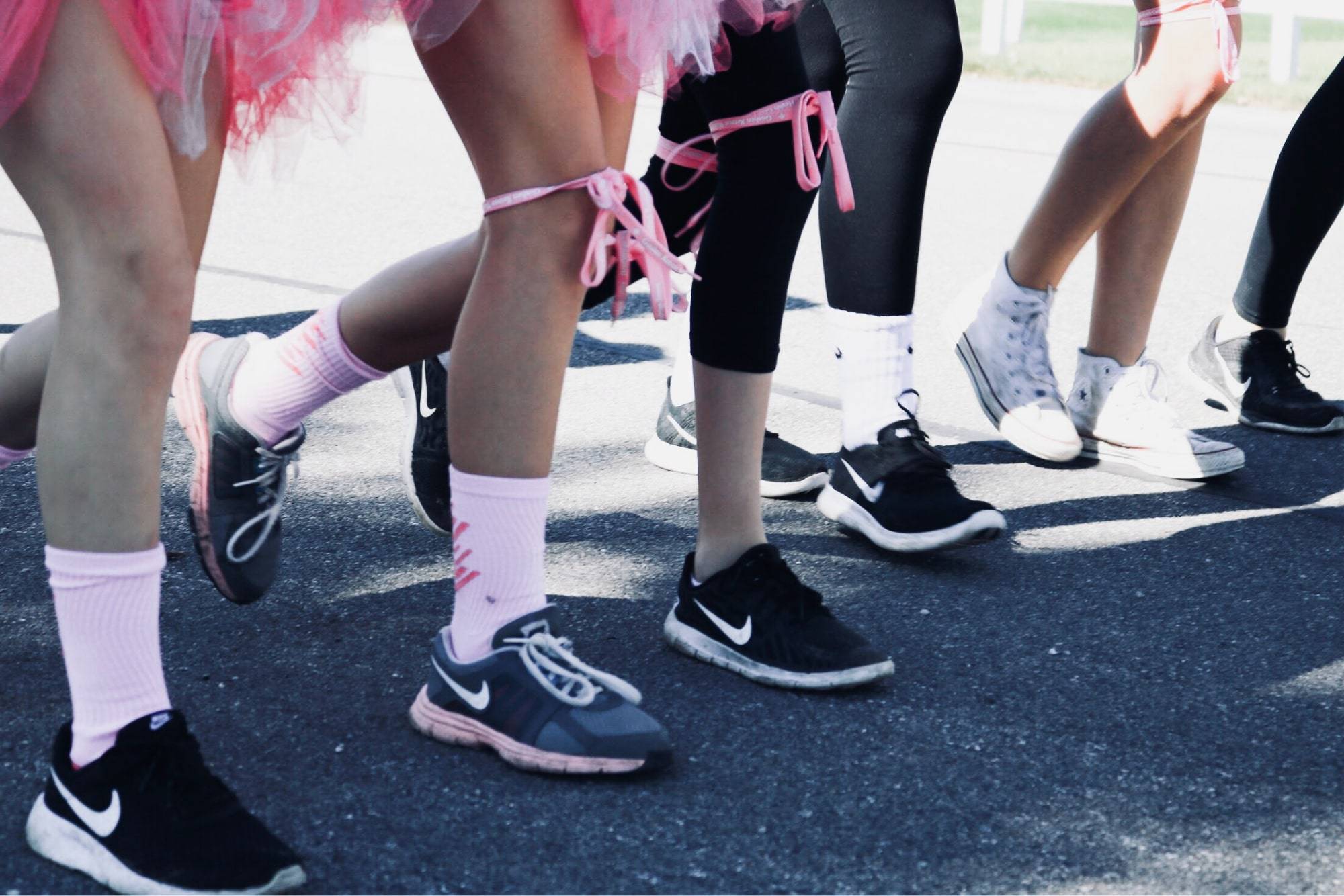Studies show that one of the main factors of a successful business is its commitment to sustainability. Over the past five years, online searches for eco-friendly products and services have increased by 71%.
Therefore, if you are concerned about how to plan a marathon with respect for the environment, you are on the right track. It will increase your chances of attracting more participants, especially among the younger generation. In this article, we will tell you exactly what you can do.
Choose Paperless Registration
Registration is an essential step in marathon event planning. Unfortunately, many race directors still use paper documentation to communicate with competitors. Meanwhile, approximately 1 billion trees worth of paper are thrown away in the US every year, and paper makes up 26% of the waste dumped in landfills.
Therefore, online registration and digital workflow are important steps to reduce marathon waste.
In addition to environmental friendliness, this approach greatly simplifies communication because letters arrive by e-mail faster than through the post office, and you spend less time on logistics. Finally, it saves the race budget since paper, unlike an email, costs money. If you can’t avoid paper forms entirely, at least choose recycled paper.
Skip the T-Shirts for Runners
Race T-shirts are a common souvenir for competitors, but, in fact, they are rarely worn more than once. The carbon footprint of a cotton T-shirt is 2.1kg of CO2E, while a polyester T-shirt reaches 5.5kg.
If you choose a race against waste, cut costs on such merchandise. State your decision on your running event profile and invite runners to spend the cost of the T-shirt (often included in the price of the race) on some environmental cause. For example, Trees not Tees, a reforestation company, plants a tree in honor of every runner who forgoes a T-shirt.
You should not worry that the race logo won’t get enough attention. Trees not Tees sends runners a photo of their seedlings, which can include any logo, be it the race itself or a race sponsor. Thus, your running event will definitely be remembered and receive more loyalty.
Get Rid of Plastic
The worst impact of a race on the environment is the pile of plastic bottles and cups that end up in landfills. A report by the National Academies of Sciences, Engineering, and Medicine ranks the US as the number one country in the world for producing unreclaimed plastic waste, as each American is responsible for approximately 287 pounds of plastic waste annually.
Of course, you can’t leave runners without water. Therefore, consider the following steps for sustainable racing:
- Ask the racers to take care of the water tank themselves. For example, they can attach a portable bottle to their belt or wrist and refill it at every water station along the route.
- Use compostable water cups. A similar green racing initiative is already being used at the Chicago Marathon and Houston Marathon. In this case, be sure to check that these products have the right symbols, which are necessary for the recycling center to accept them for recycling after your event.
- Offer runners branded eco cups instead of T-shirts. Unlike the latter, this souvenir will definitely not be disposable. It is a useful item that runners can take to subsequent races and remember your event through the logo at the same time.
- Place recycling containers throughout the race route. After, have race volunteers sort waste and keep strict records. This will allow you to recycle all the appropriate products. Besides, you will know how many cups or bottles your event really requires and avoid unnecessary supplies in the future.
Reshape Your Goodie Bag
Yes, the goodie bag contains important sponsorship promotional material, which means you still have to send it to the runners. But given the abuse of paper and the dangers of plastic (which is used for the packaging), wouldn’t it be better to make your goodie bag virtual?
For example, you can place a page with all sponsorship offers on your website or add the corresponding QR code to the profile of your running event. This approach saves you from wasted paper and plastic bags and ensures that valuable promotional materials are always at the participants’ fingertips. And since losing a flyer is much easier than a static link posted on a website, runners are more likely to get acquainted with race sponsorship information.
Try to Reuse
When setting up a running event, you order a lot of event signs, race bibs, and numbers. Before throwing them away immediately after a race, consider the benefits of reusing them for future races — such as reducing greenhouse gas emissions, reducing the same waste, preventing pollution, saving energy, and so on. After all, it will also save you costs.
For example, if you organize a race series, assign race bibs to each participant until the end of the series. If your race is not part of a series, encourage participants to keep the race bib for discounts on a subsequent event or other goodies. As a bonus, this could make the runner visit your race again.
Collaborate with Local Food Providers
If you want to organize a truly eco-friendly marathon, buy running snacks from local farmers. Such food is considered sustainable as it reduces packaging waste and prevents air pollution from transport.
Just as important, this way, you help small local businesses thrive and keep jobs, and for every $100 spent on small businesses, $48 goes back into the local economy. This makes the local business community more likely to support your next event.
Think through Transportation
If you wonder how to organize a race in an environmentally responsible way, you should consider how participants get to and from it.
The transport sector produces the largest share of greenhouse gas emissions. If a large percentage of participants come to you from other cities and even countries, the greenhouse gas emissions of your event will increase. If you are not ready to promote your race to only local runners, consider the following options:
- Invite attendees to pay a carbon offset fee when registering for your event. For example, the registration platform UltraSignup has already implemented a similar practice and plans to improve it to automatically calculate the offset for each runner to cover their travel emissions.
- Support carpooling. 44% of nearly a billion daily personal car trips in the US are made with just one passenger, even though the car can accommodate 4-5 people. This negatively affects both traffic and environmental pollution. Carpooling, in turn, prevents more than 1.6 million tons of CO2 annually. You can have a volunteer coordinate the shared transportation of the participants in a spreadsheet. If you are holding a major event, contact a company that can take care of organizing ridesharing for you. Thus you simplify the task for the runners and provide them with the “running on green” option.
Make Your Race Green Official
Sure, you can implement the above green initiatives for races on your own without formalities. But if you’re serious about sustainability, you can get an environmental performance certification for your event.
The Council for Responsible Sport (CRS), a non-profit organization, offers assessment and certification of the environmental impacts of sporting events. CRS has developed 61 best practices (5 categories) to make the event green. Upon successful implementation, your race will be certified as a Responsible Sport at the basic, silver, gold or evergreen level, depending on the number of applied practices.
CRS has already certified over 175 events, including 155 running and triathlon events. If you’re ready to take your race to the next sustainability level, check out their “Practical Guide to Hosting Radially Responsible Events.” It’s free and extremely useful if you’re looking to formalize your eco-friendly status.
Choose Digital Marketing
As with the goodie bag, your event posters and flyers contribute to the paper waste that, as you already know, is so big in the US. In addition, all these materials are created using a printer. On average, one printer factory generates as much carbon dioxide emissions as 500 houses, and 100 million trees go into the production of junk mail, which often ends up in the trash as soon as it is removed from the mailbox.
Digital advertising is a direct path to sustainability. What does it include? A data-driven email campaign with an inviting button to register for the event, a website for your race with all the necessary information for participants, online advertising tailored to avid runners, and promotion of the event on specialized platforms such as Runzy.
All of these solutions are interactive, modern, and environmentally friendly. That’s why you should consider them when promoting your race.
We live in times of eco-wakening. Before starting a race, runners are increasingly considering not only its prestige but also its sustainability. By introducing green initiatives step by step, you have every chance to meet their needs and organize an in-demand running event.






